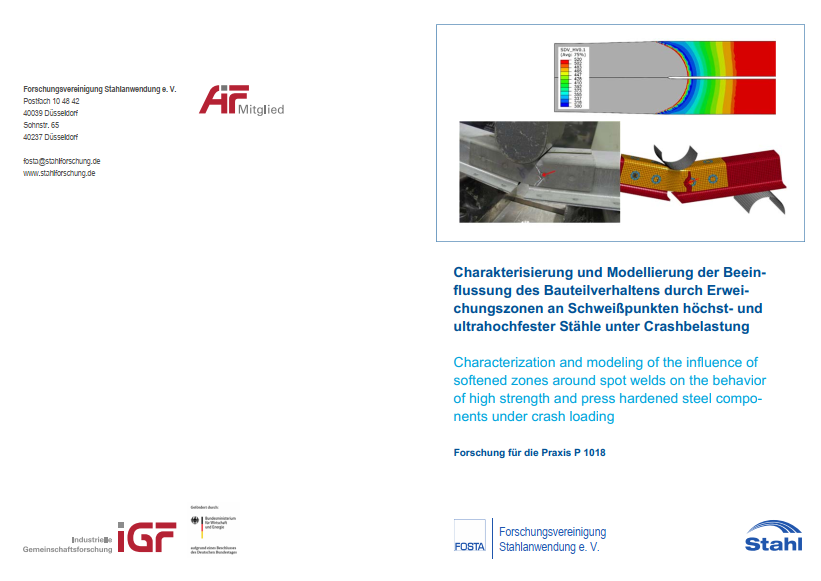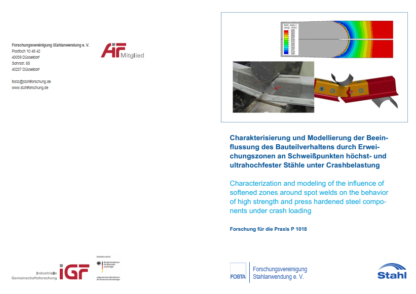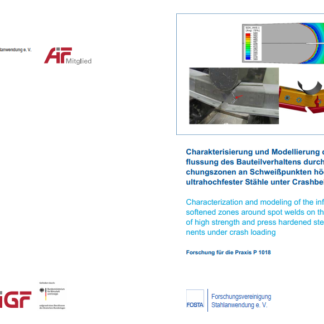Description
P 1018 – Characterization and modeling of the influence of softened zones around spot welds on the behavior of high strength and press hardened steel components under crash loading
High strength and press hardened steels are widely used in the automobile production for light weight construction to increase the energy efficiency and passive safety at once with resource savings. The widely spread spot welding technique is used at the moment and in future for joining the single components made of high strength steel to the load bearing body in white. Softened zones around the spot weld occur due to annealing effects in high strength and press hardened steels, which endanger the component integrity.
The aim of this research project is to find a general correlation for describing the reduction in strength of spot welded component made of high strength and press hardened steel in dependence of the geometrical dimensions of the softened zone and the strength mismatch. The influences of the welding process parameters are investigated by numerical process simulation and verified by welding experiments. Spot welds are fabricated with geometrical different softened zones and tested to show the influences on the mechanical properties of welded sheet metals. This is done for the complex phase steel HCT980C and the press hardened 22MnB5 steel. The influence of the softened zone on the load bearing capacity under shear and tension of the spot weld is investigated with the KS-2 technique. A modeling strategy for spot welds is developed for crash simulation on the base of these tests and the characterization of the softened zone and validated by simulation of the performed component test.
The measurement of hardness distribution in metallographic cuts of spot welds of the high strength steels HCT1180X, HCT980X and HTC980C have shown all a reduction of hardness in the softened heat affected zone. In tension and punch tests with specimens, which contain spot welded micro-structure including softened heat affect-ed zone in the measurement area, lower strength and fracture elongations have been measured especially with HCT1180X spot welds.
These obtained results are integrated in a simulation methodology for assessing the crack formation in the softened zones at spot welds. Then steel users will be able to make statements about the load bearing capacity of spot-welded structures made from high-strength-and ultra-high-strength steels. This allows the efficient and economic development of spot-welded components made from high-strength steels and thereby contributes to the qualification of these high strength steels for new spot-welded lightweight components made of steel. The research project (IGF-Nr. 17991 N) was carried out at Fraunhofer-Institut für Werkstoffmechanik IWM, Freiburg, am Laboratorium für Werkstoff- und Fügetechnik (LWF) der Universität Paderborn und an der Materialprüfungsanstalt MPA, Stuttgart. FOSTA has accompanied the research project work and has organized the project funding from the Federal Ministry of Economics and Technology through the AiF as part of the programme for promoting industrial cooperation research (IGF) in accordance with a resolution of the German parliament.
Only available in german language.
Published in:
2019




